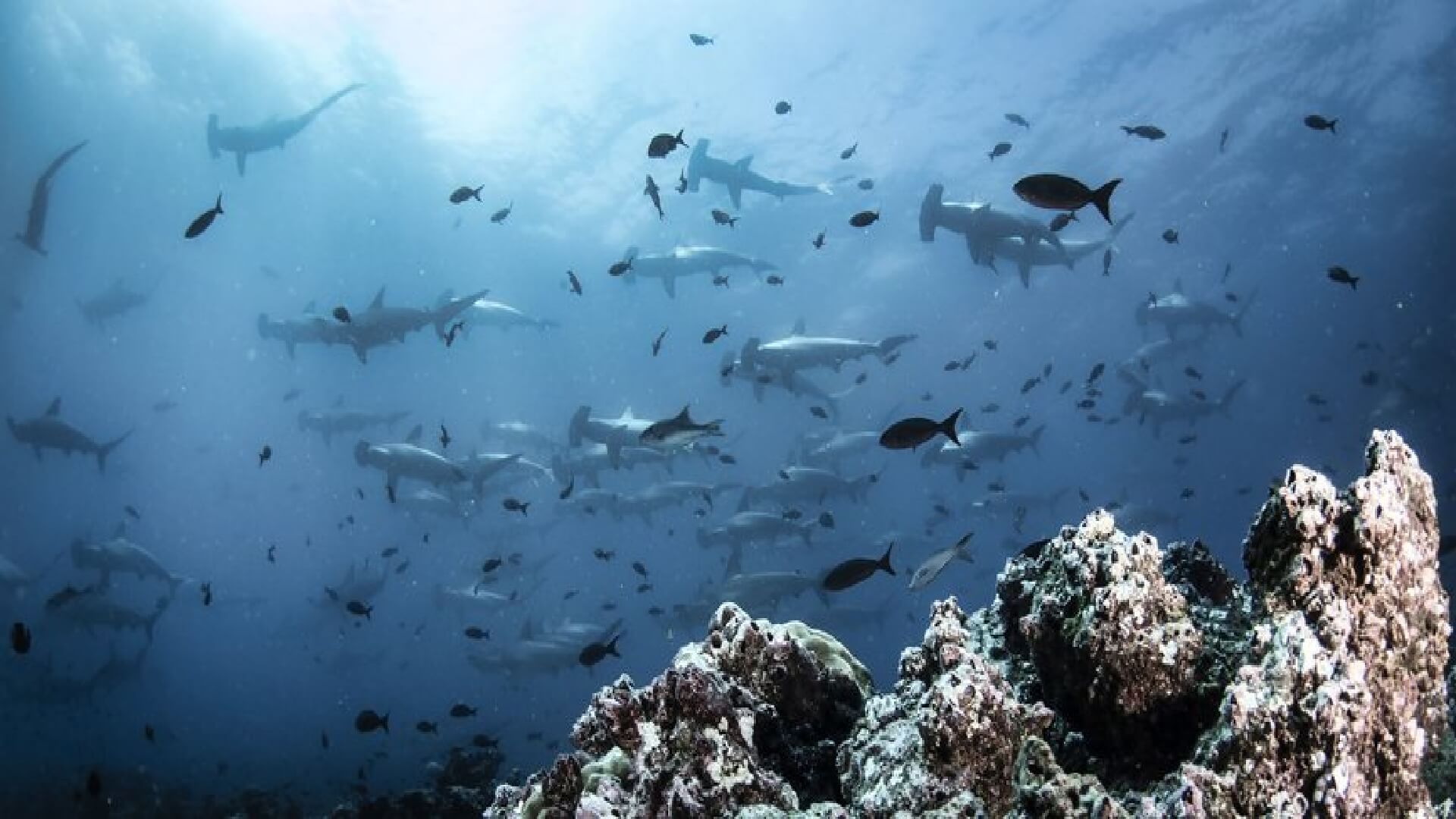It is no secret that our love for the Galapagos Islands runs deep. It is undoubtedly one of the best places to scuba dive in the world. It can be as challenging as it is rewarding, and getting there is not cheap. This is why we wanted to share some advice with you to make sure that your trip is worthwhile.
If you have more questions or need help booking your trip, you can always get in touch with us.

1. do it on a liveaboard.
Any diving in the Galapagos is going to be good, but Darwin Island and Wolf Island host some of the best dive sites in the region, and they are only accessible via liveaboard. If you made it all the way to the Galapagos, you have to make it to Wolf and Darwin.

2. make sure your itinerary includes cabo douglas and punta vicente roca.
A lot of people like to skip Fernandina Island and Isabela Island because the water is too cold, but doing so means you likely won’t encounter marine iguanas, penguins, mola molas, and more. Remember, marine iguanas only exist in the Galapagos, and watching them eat underwater is a unique experience that is not to be missed. So just pack your 7mm or drysuit and suck it up. It’s worth it.

3. choose the right season.
There are two distinct seasons in the Galapagos. The first is the “warm” season which runs from December through May and offers better visibility and more chances of being able to see the large hammerhead walls. The “cool” season runs from June through November when there are more nutrients in the water. This attracts more marine life, including the large pregnant whale sharks. In fact, Darwin Island is the only place in the world where pregnant whale sharks are consistently seen.

4. bring extra neoprene.
Whether you go during the cool season or the warm season, the water on some of the sites is going to be cold. Like, very cold. We usually recommend bringing a 7mm with a hood, or a 5mm with a hooded vest that can be worn underneath. If you’re an experienced drysuit diver going during the cold season, by all means bring the drysuit.

5. pack a pair of gloves and then pack another one.
The currents in the Galapagos can be very strong, and a lot of the diving will require you to hold on to the rocks so you don’t end up in Panama. The best thing you can do is pack a pair of gloves, and then pack a backup pair in case the first one gets ripped.

6. don’t go if you’re not an advanced diver.
But really, don’t. Any respectable boat will not allow divers on board unless they have a minimum of 50 dives. Sadly, not all operators are respectable. Before you book any trip, make sure that you meet all the requirements and that you have all the experience necessary. The Galapagos Islands aren’t going anywhere (or at least we hope not), and you can get there when you are ready.

7. choose a good operator.
Diving the Galapagos can be very challenging, but it’s also incredibly rewarding. That being said, there is no price for safety. Even if it means that you have to plan it years in advance and set up a payment schedule, choose a respectable operator. It will make a big difference.

8. bring a pair of boots, a hat, and some suncreen.
Most liveaboards will offer one or two land excursions, most likely to Seymour Island and Santa Cruz Island. This is a great way to see the blue-footed boobies, giant tortoises, frigatebirds, sea lions, and a lot of other topside animals. Those excursions can get really hot and muddy, so make sure to bring the appropriate attire.

9. plan a land excursion, but not in the galapagos.
If you chose the right liveaboard itinerary, you will not need to spend extra nights on the islands. Unless you are really into birding or surfing, most people find that the 7 nights that include two land excursions are quite fulfilling. However, Ecuador is full of beautiful areas to explore. One of our favorites is Mindo. Only a 2-hour drive from Quito, this cloud forest is known for its waterfalls, birds, and butterfly sanctuaries. Another great option if you are into hiking is to check out the Cotopaxi volcano in Quito.

